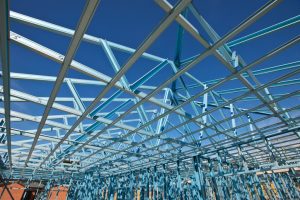Head to Head: Wood Framing vs Steel Framing: Which One is Best for Your Job?
When framing, there are two main options: wood and steel. Each has its own advantages and disadvantages. It’s true that wood is currently the most common material, but at Grove Hardware we’re starting to see steel creep up on it. If you’re trying to decide if you should stick with wood or move on to steel, keep reading to see the pros and cons of each compared side by side.
The advantages of steel framing
There are a number of advantages to using steel for framing, and once you read them over it’ll be easy to see why this is becoming such a popular option in some applications.
- It lasts longer. Unlike wood, steel never rots and it doesn’t decay. As a result, it simply lasts longer than wood does.
- There’s less of a chance of mold or bugs. No homeowner or business owner wants mold or bugs in their property. Both are less likely with steel framing.
- It’s durable. Wood can warp and bend but steel doesn’t. As a result, walls framed with steel can actually look straighter.
- Steel is lightweight. This allows it to cover a larger area than wood can.
- It’s an eco-friendly option. Steel can be reused and can be made from recycled material.
- It’s consistent. When you buy your steel from the same construction supplier, you can expect that it will be of consistent quality.
The disadvantages of steel framing
Of course, steel isn’t the perfect option for framing and it isn’t the right choice for every application. Some of its disadvantages include:
- The cost. The main complaint that we hear on job sites is that it costs more than wood. How much more? You should expect to pay between 5% – 15% more for steel than you would for wood.
- There aren’t as many experts. Since wood is the standard, there are fewer contractors who have experience framing with steel.
- Buildings can be louder. Squeaky metal joints can be make noise in the finished building.
- It’s hard to adjust. Once you have a steel frame adjusted, it’s difficult or impossible to adjust.
The advantages of wood framing
The advantages of framing with wood are as follows:
- The cost. This is the main benefit – it’s more affordable to frame with wood. Not only is the material cheaper, but because it’s been used for framing so long, it’s easier to build and transport.
- More people are experienced with it. Most any contractor is going to be familiar with wood framing.
- Flexibility. Wood frames are more flexible so if a change needs to be made, it can be done relatively easily.
- Energy efficiency. Compared to steel, wood is more energy efficient and doesn’t require as much insulation.
The disadvantages of framing with wood
Of course, there are disadvantages too:
- Pests. Harmful insects can turn wood into their dinner.
- They’re not weather proof. This really only matters while the building is being made, but if you’re framing with wood, it’s extremely important that it’s never exposed to water. Steel is basically weatherproof.
- Rotting and decay. Eventually, wood will rot and decay.
Hopefully this has provided some insight into both the pros and cons of framing with either wood or steel. If you still have questions, feel free to reach out to Grove Hardware at 909-544-4331.



































